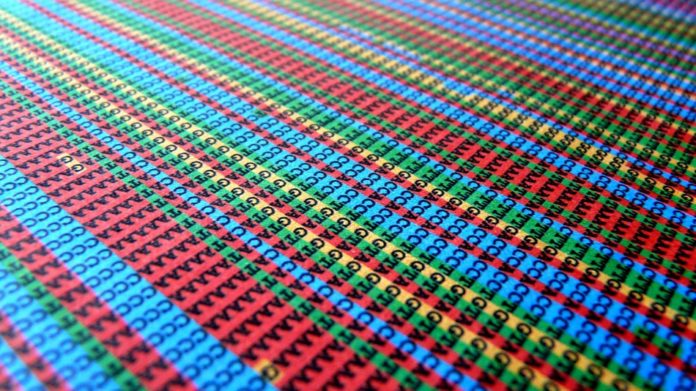More than 90% of Human DNA Is Useless ‘Junk,’ Study Finds

More than a decade has passed since the completion of the Human Genome Project, the international collaboration to map all of the “letters” in our DNA. The huge effort led to revolutionary genomic discoveries, but more than 10 years later, it’s still unclear what percentage of the human genome is actually doing something important.
A new study suggests that only 8.2% of human DNA, or about 250 million of these so-called DNA letters, are functional, and more than two billion are not.
The results are higher than previous estimates of 3% to 5%, and significantly lower than the 80% reported in 2012 by the Encyclopedia of DNA Elements Project (ENCODE), a public research project led by the U.S. National Human Genome Research Institute to study the role of the three billion total letters in human DNA.
The differences may stem from the nuanced definition of “functional DNA,” said the study’s co-lead researcher Chris Ponting, a professor of genomics at the University of Oxford in England.
“[The ENCODE project] counted all pieces of DNA on which some protein activity occurred, whether or not that activity was useful to the cell,” Ponting told Live Science. “The difficulty is that protein activity occurs on all DNA, such as when it is replicated just before cell division.”
In the new study, Ponting and his colleagues report that majority of the human genome is nonfunctional, or “junk DNA.” As studies have found, some of this junk DNA may be useful for regulating gene expression, but only a small portion of it, Ponting said.
Instead, upward of 90% of human DNA may be go unused.
“Whether people like it or not, the vast majority of our genome is junk,” said Dan Graur, a professor of molecular evolutionary biology at the University of Houston in Texas, who was not involved with the new study. “We know that because we have so many organisms that have much smaller genomes than we do and organisms that have much larger genomes than we have. The size of your genome is not really what matters.”
The wheat genome, for example, is five times larger than the human genome, according to a study published this month in the journal Science.
In the new study, the researchers used an evolutionary model to estimate what percentage of the human genome is functional and what percentage is junk. Mutations randomly occur in DNA. Genetic code with fewer mutations tends to be important because it shows these parts of the genome likely perform an important function, Ponting said.
The researchers compared the DNA sequences of 12 mammals, including cattle, ferrets, rabbits and pandas, to see how the animals’ DNA had changed since their last common ancestor lived about 100 million years ago. Then, they counted the number of intact pieces of DNA preserved by natural selection.
“We decide on how much is functional by scrutinizing what has happened over long evolutionary time,” Ponting said.
Animals that are closely related to humans have more similar DNA sequences than animals that are distantly related, the researchers found. For instance, mice and humans share 2.2% of their functional DNA because of the high number of mutations that occurred since they diverged more than 80 million years ago.
Like humans, just 8.2% of the DNA in each of these animals is functional, the findings suggest.
However, some of that DNA is more important than others. Slightly more than 1% of human DNA codes for proteins that carry out most of the body’s biological functions, the researchers said. The remaining 7% may regulate these protein-coding genes by determining when to switch them on and off.
The findings may help guide researchers studying diseases and disorders, the researchers said. “If we’re going to look where disease-causing mutations are, we only have to look in less than 10% of the genome,” Ponting said.
The study was published on July 24 in the journal PLOS Genetics.
- Erectile Dysfunction in Military Males Is Triple the Norm
- Many Parents Think Their Obese Child’s Health Is Good
- Washington State’s Sprawling Wildfire Captured By Drone Cam
- Of a Feather: Photos Reveal Stunning Birds of the Southwest
This article originally published at LiveScience here

